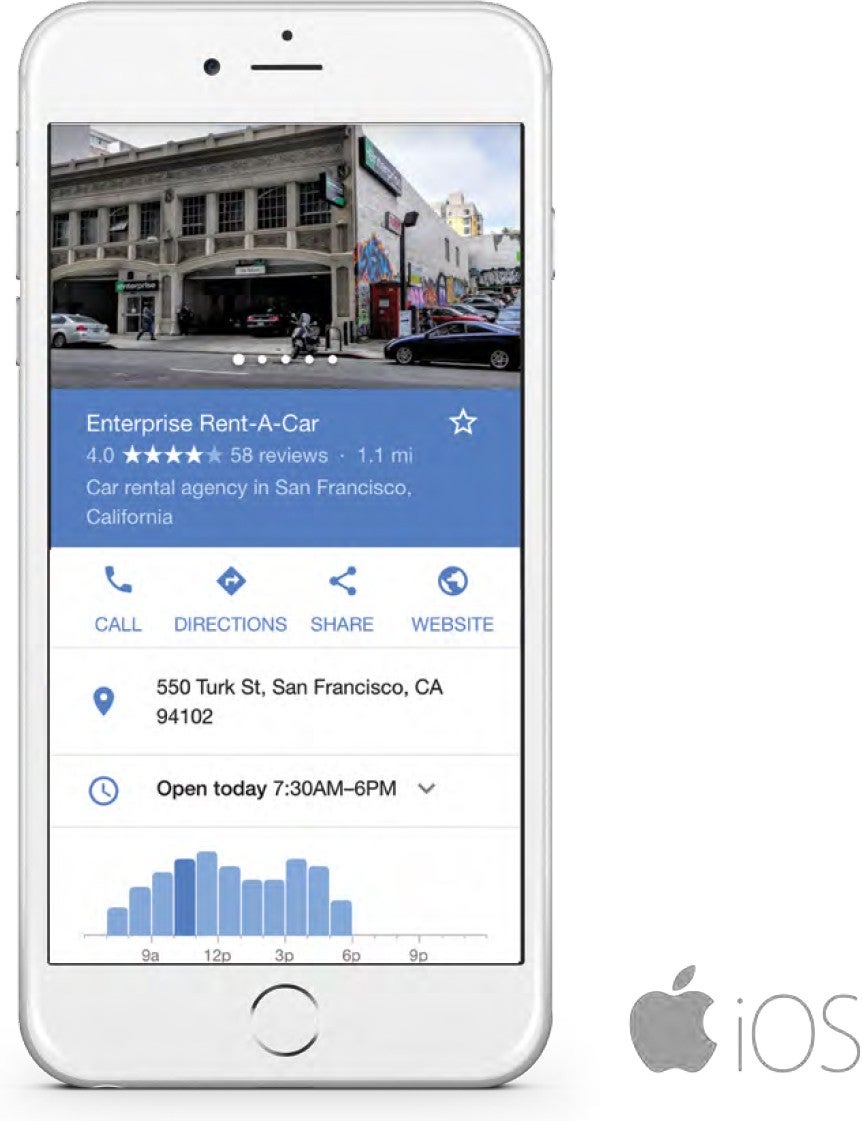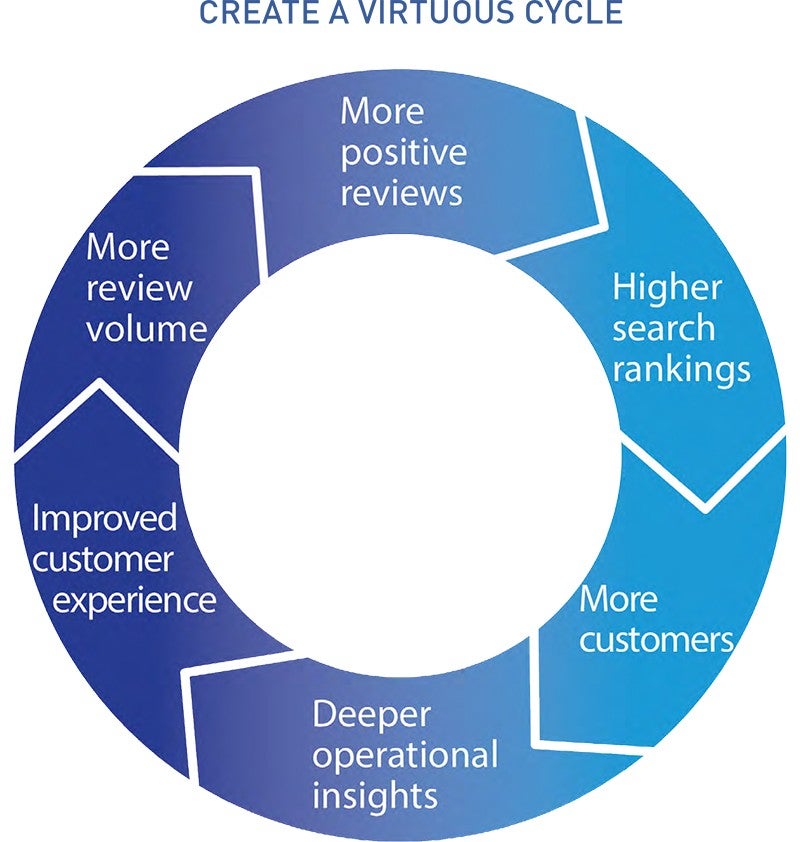Turn Your Customers into Brand Champions
Reputation Staff Writer

A Guide for Chief Marketing Officers
Executive Summary
- Meet the new consumer
Major demographic shifts and the migration to mobile and social media will challenge — and change — everything we know about consumer marketing and brand reputation. - Who owns your brand?
Brand equity can no longer be bought. Online reviews now generate total market transparency for location-based businesses. Reviews tilt the balance of branding power away from companies and into the hands of customers. - The battle for brick-and-mortar customers is won or lost on the social web
To win, marketers must actively enlist customers as online advocates. Those who scale online review volume and quality will be rewarded with higher search visibility and more business at street level. - “Dark data” provides priceless operational insights
Vast amounts of unstructured, unmined sentiment data on social media provides feedback about the customer experience that you can filter using thematic analysis and use to improve operations at the national or location level. - Business implications
Online reputation stands between everything an organization spends on marketing and its revenue performance. Generating a representative volume of positive reviews — and improving the customer experience by mining data in social media — is more powerful than any Facebook advertising campaign. - A plan for action
Monitoring and requesting authentic reviews and enlisting social communities to share their positive experiences has paid huge dividends for leading companies.
1. Meet the New Consumer
Major demographic shifts and the migration to mobile and social media will challenge — and change — everything we know about brick-and-mortar consumer marketing.
Demographics are Changing
For decades, marketing has focused on boomers and has met them in the media they’re accustomed to — advertising.
This used to be a sound strategy, but the landscape has changed. The boomer population — aged 51 to 69 and older — has declined to only one-fourth of U.S. population. Millennials, aged 14 to 35, now outnumber boomers as a share of the consumer market.1
Boomer Bust
This shift will accelerate, as millennials will rise to be one-third of U.S. consumers within four years. To be successful in the near future and win the brand affinity of young families, marketers must develop better strategies for building loyalty with older millennials now.
The Shift to Mobile
On top of these dynamics, the dominant marketing channel has changed from monolithic mass media to social micro-casting on mobile devices.
An Aggressive Shift to Mobile
This migration has been decisive: the amount of time Americans spend consuming
content on mobile devices is dwarfing time spent on desktops.
Millennials Want Social Proof
Most millennials — 93 percent — say they rely on blogs and user/consumer reviews before making a purchase. And 77 percent trust the reviews they read on brand websites.2
These are striking numbers. Millennials represent the predominant growth market in most industries, and they consider crowdsourced opinion on the web indispensable to making decisions about where to take their business. In other words, word-on-mobile is eclipsing word-of-mouth.
The consequence is clear: you can’t market to the largest and fastest-growing segment of the market without proof on the social web.
2. Who Owns Your Brand?
You can’t buy brand equity anymore. Online reviews now generate total market transparency for location-based businesses — which tilts the balance of branding power away from companies and into the hands of customers.
You’re Not in Control
There was a time when marketers with adequate cash controlled their brands. But now, in the always-on digital world, marketers have begun falling into one of two camps: those who co-create their brands with consumers online, and those whose brands are being co-opted by the public.
The Market is Transparent
Customer experience is a currency that’s being traded between consumers online 24/7, in a digital exchange of perfectly transparent (but factually imperfect) information about your products, services and locations.
An overwhelming 84 percent of millennials don’t trust advertising.3 They have far more confidence in crowdsourced opinion on the web.
In such an environment, every marketer now must actively compete for mindshare on review sites. Review sites have become critical channels to reach customers who might otherwise not find your business at all.
“Before deciding where to go for a product or service, 84% of consumers look at online reviews.”
~SoftwareAdvice
3. The Battle for Brick-and-Mortar Customers Is Decided on the Social Web
To win, marketers must actively enlist customers as online advocates. Marketers who scale online review volume and quality will be rewarded with higher search visibility and more business. They will protect and grow their brand reputation.
Online, every customer has the microphone. So instead of managing the message one-way, through one-to-many mass media, marketing must now develop messages one-with-many. In this new, hyper-local environment, high impact brands are being shaped at the location level.
For proof, just pick up your smartphone. Search for a rental car location near you. Your options will show up as one of the following:
[widgetkit id=”269″]

Local search, mapping and review sites have become critical gateways for customers to find what they’re looking for at street level.
From the first search results screen, through the online business listings detail that helps customers find your locations, through posts on review sites and social media sites — you’ll see that star ratings and reviews are inescapable.
A Battle on Thousands of Fronts
Adding to the challenge, marketers must compete on thousands of fronts at once.
The math is as simple as it is daunting: multiply your number of locations by the number of review and listing sites where they appear on the web. That’s how many points of presence you now need to manage, to attract consumers.
Consider an example — in this case, a client running Reputation.com:
Online Reputation Drives SEO
In local search on Google, in directories and on other search engines, the game is changing. For location-based businesses, SEO is now being driven by star ratings and reviews.
The data proves it. Data scientists at Reputation.com analyzed the impact of online reviews on search engine visibility.
Four key factors of online reputation drive page performance4
- Review volume: How many reviews a location receives.
- Review recency: The freshness of online reviews.
- Review length: Word count in customers’ reviews.
- Review sentiment: Number of stars customers gave them.
The more reviews a location gets — and the more recent, detailed and positive those reviews are — the higher their search rankings, and the more likely new customers are to find them.
“A location’s first 10 online reviews can boost it from the search engine netherworld to the top half of the first page.”
Online Reviews Drive Search Rank
The impact here is significant: the first 10 reviews boost ranking from the search engine netherworld to page one. And just 50 reviews increase expected click-through rate by 266 percent.5
Customers are far more likely to see and choose your locations when they have a large number of reviews.
4. ‘Dark Data’ Provides Priceless Operational Insights
Vast amounts of unstructured, unmined sentiment data on social media provides feedback about the customer experience that you can filter using thematic analysis to improve operations — at the national or location level.
While pundits have opined for years about the explosion of data on the internet, the business value of that data remains largely untapped. Consider these jaw-dropping statistics:6
- The internet has 3.17 billion users, and 2.3 billion are active social media users.
- One million new active mobile social users are added every day. That’s 12 each second.
- Google processes 100 billion searches a month.
The veins of rich data that are being generated on the social web represent a goldmine for companies looking to understand buyer behavior, preferences and sentiment that can help them fine-tune marketing efforts and make operational improvements.
ORM platforms that offer thematic analysis shine light on the vast amounts of “dark data” on the social web, helping companies understand the nuances embedded in customer feedback and detect patterns. Thematic analysis flags troublesome trends for further investigation, whether nationally, regionally or at the individual location level.
This tornado chart provides a visual representation of how well an enterprise is performing with respect to thematic categories relevant to its target audience, and relative to industry benchmarks:
“Customer insights are the gold buried in your data.”
~ Brandon Purcell, Forrester
When you harvest operational insights from online ratings and review data, you’re not simply in a better position to market your business — you can change the way it runs.
5. Business Implications
Online ratings and reviews stand between everything an organization spends on marketing and its revenue performance.

The moment that a potential customer sees a star rating is a groundzero, digital moment of truth in her search for a product or service. It determines where she takes her business, and whether your location gets the lifetime value of that customer.
Online ratings and reviews are the gate for search ranking, visibility and visits. Whatever a marketing leader is spending in paid and owned media of all kinds — advertising, outdoor media, radio

television, on the web, SEO, SEM, social media and PR — all goes up in smoke when a potential customer is confronted with mediocre reviews.
- Locations’ online reputations are critical competitive elements that must be carefully developed and managed, to help customers decide in your favor.
- Generating representative reviews from the satisfied silent majority — and harvesting data in online reviews to resolve issues and identify operational improvements —creates a virtuous cycle.
6. A Plan for Action
Monitoring and requesting authentic reviews and enlisting social communities to share their positive experiences has paid huge dividends for leading organizations.
To turn customers into digital advocates who help drive traffic and revenue, best-in-class marketing leaders are deploying technology to:
- Request reviews systematically from all customers to establish a representative volume of positive reviews. Improve response rates by requesting through iPad kiosk, email and SMS.
- Stream reviews and ratings to locations’ web pages to improve SEO rankings, add context, depth and credibility to star ratings and drive more foot traffic.
- Ask customers to write reviews on major third-party review sites to ensure they provide an accurate picture of customer experience.
- Mine social media and run thematic analysis of customer reviews — and put it to work to improve operations.
¹ United States Census Bureau 2016
² Adweek
³ McCarthy Group and Google Consumer Surveys 2014
4 Reputation.com Consumer Healthcare Survey 2016 (n=1,500)
5 ibid
6 Brandwatch
